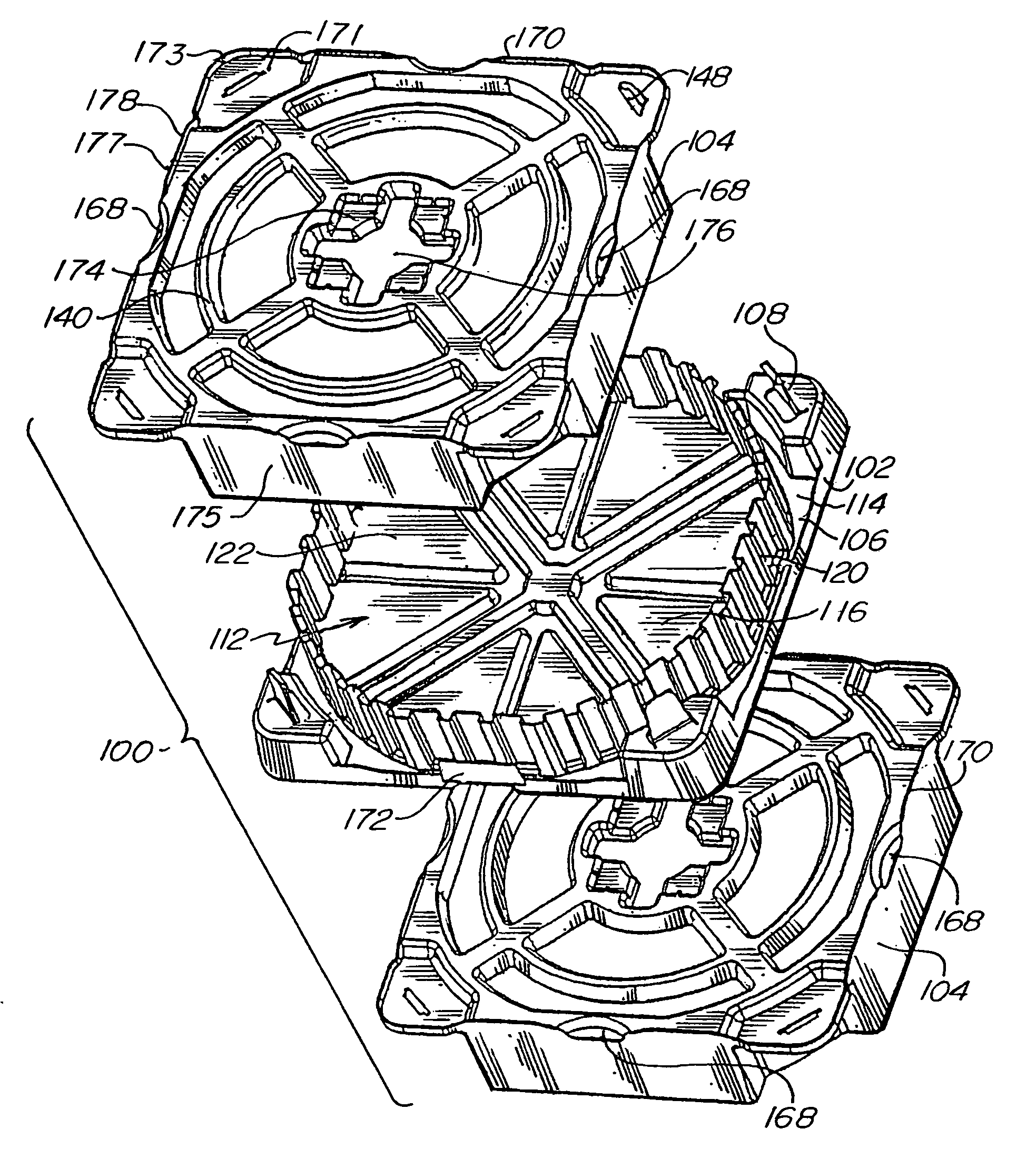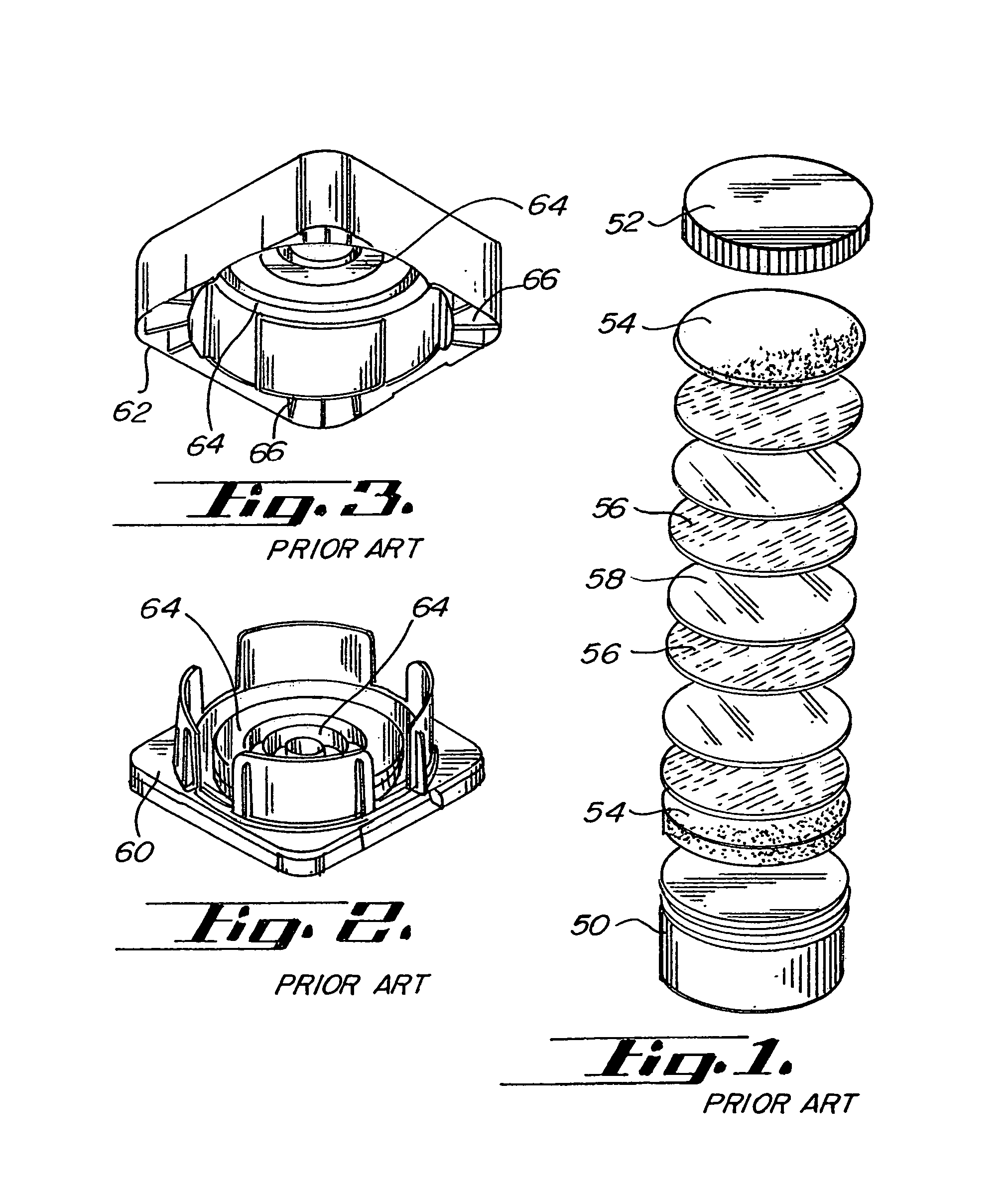Protective shipper
a protective and shipper technology, applied in the field of carriers, can solve the problems of increasing the risk of contamination and destruction of wafers or reducing yield, the thickness of disks also increases, and the minute particulates can destroy the integrated circuit on which they fall, so as to improve the handling and stacking of shippers
- Summary
- Abstract
- Description
- Claims
- Application Information
AI Technical Summary
Benefits of technology
Problems solved by technology
Method used
Image
Examples
Embodiment Construction
[0065]Copending U.S. application Ser. No. 09 / 851,499, filed on May 8, 2001, hereby incorporated by reference, discloses a shock resistant variable load tolerant wafer shipper. Such wafer shipper uses axially projecting spring latches to secure said shipper in the closed position.
[0066]Referring to FIGS. 5–6, a shipper for protecting semiconductor wafers or film frames according to embodiments of the present invention is shown. The shipper 100 generally comprises two cooperating portions, configured as a base 102 and a top cover 104. The top cover 104 and base 102 meet at an interface 106 and are secured by latch mechanisms 108.
[0067]The base 102 has a plurality of arcuate lateral wafer support segments 110, which extend from a planar portion 114 of the base and define the wafer stack pocket 112. A floor 116 is positioned at the bottom of the pocket 112. The planar portion 114 constitutes a seat and bearing surface for the top cover edge. A side wall 120 extends around the periphery ...
PUM
 Login to View More
Login to View More Abstract
Description
Claims
Application Information
 Login to View More
Login to View More - R&D
- Intellectual Property
- Life Sciences
- Materials
- Tech Scout
- Unparalleled Data Quality
- Higher Quality Content
- 60% Fewer Hallucinations
Browse by: Latest US Patents, China's latest patents, Technical Efficacy Thesaurus, Application Domain, Technology Topic, Popular Technical Reports.
© 2025 PatSnap. All rights reserved.Legal|Privacy policy|Modern Slavery Act Transparency Statement|Sitemap|About US| Contact US: help@patsnap.com



